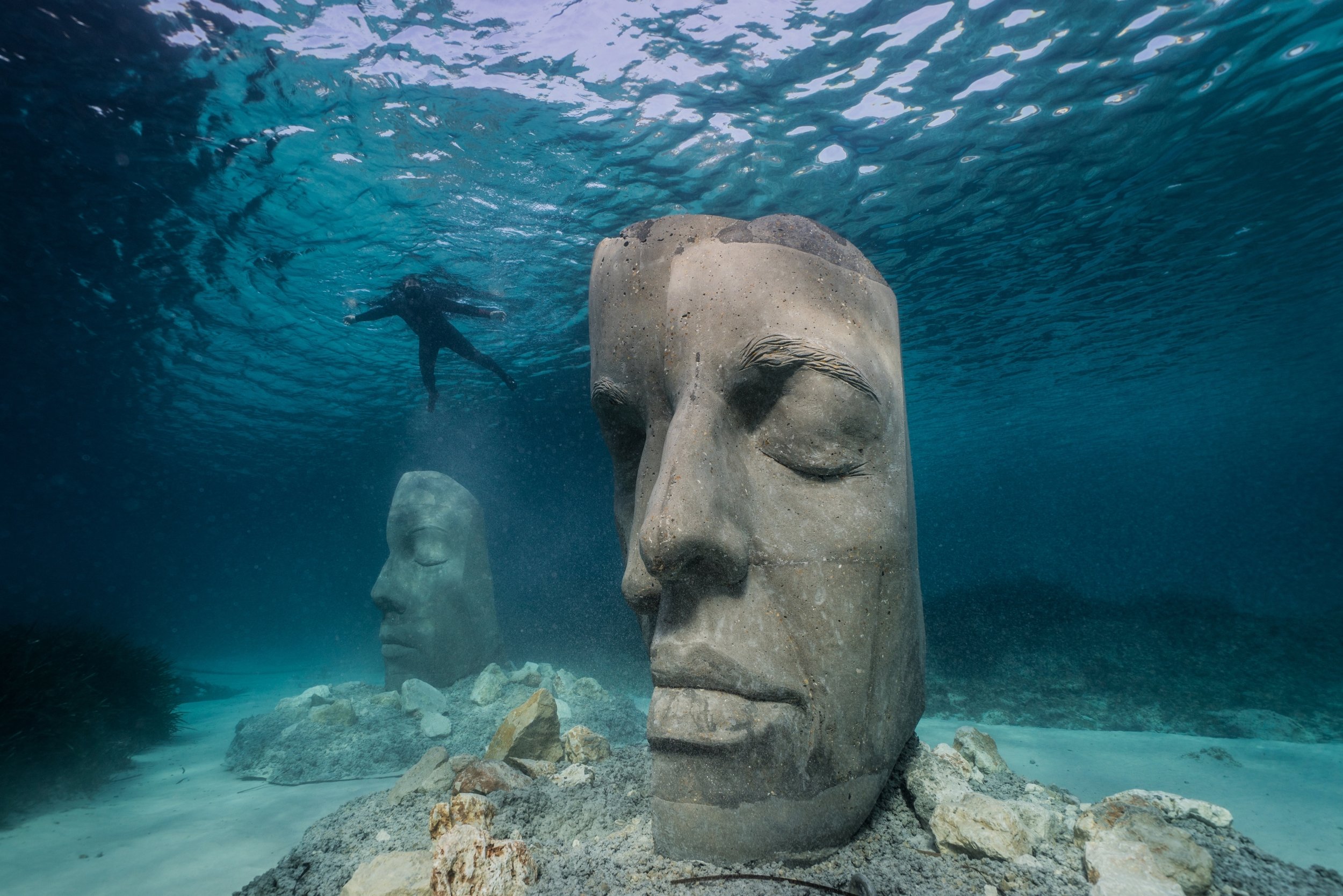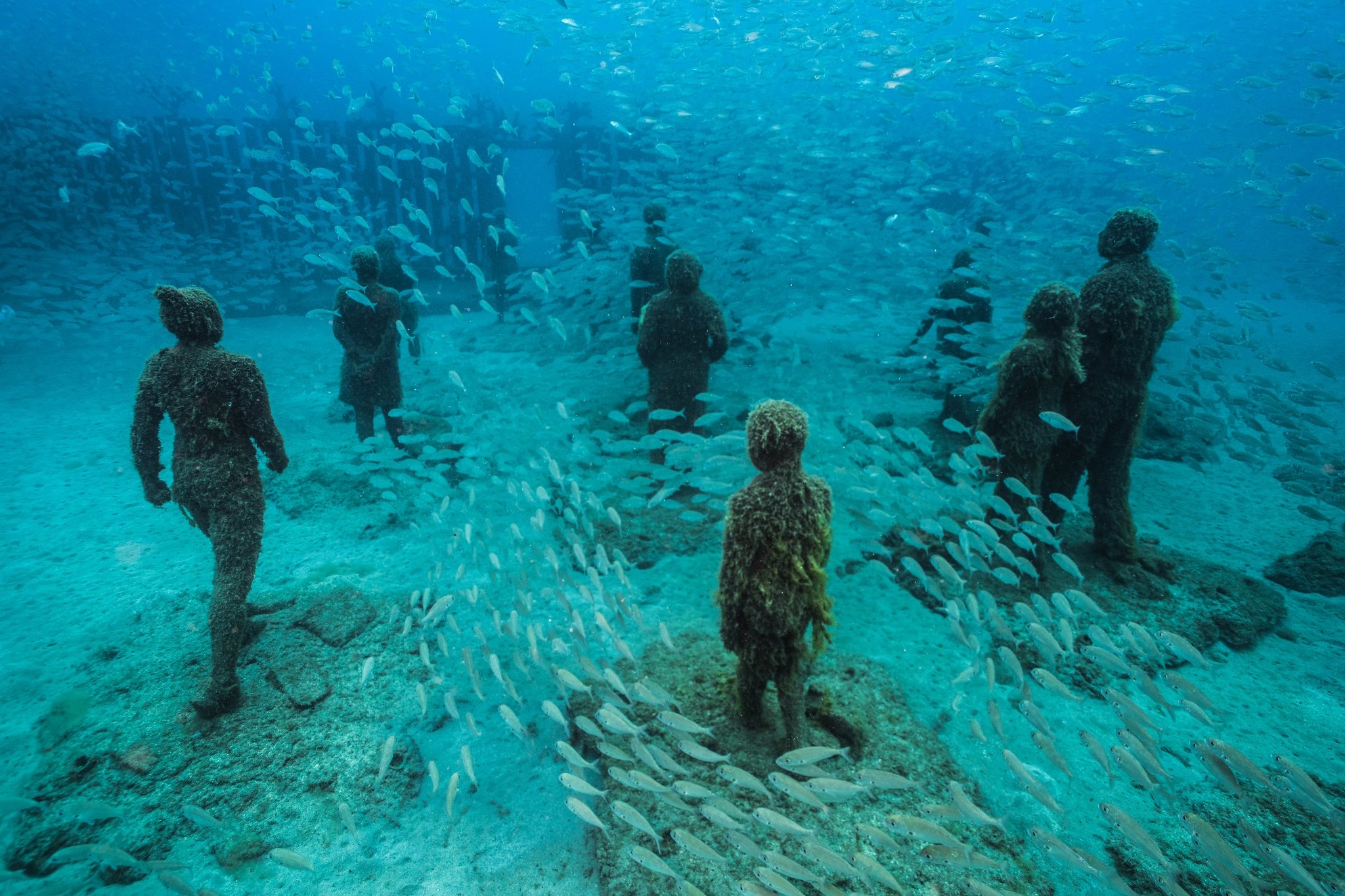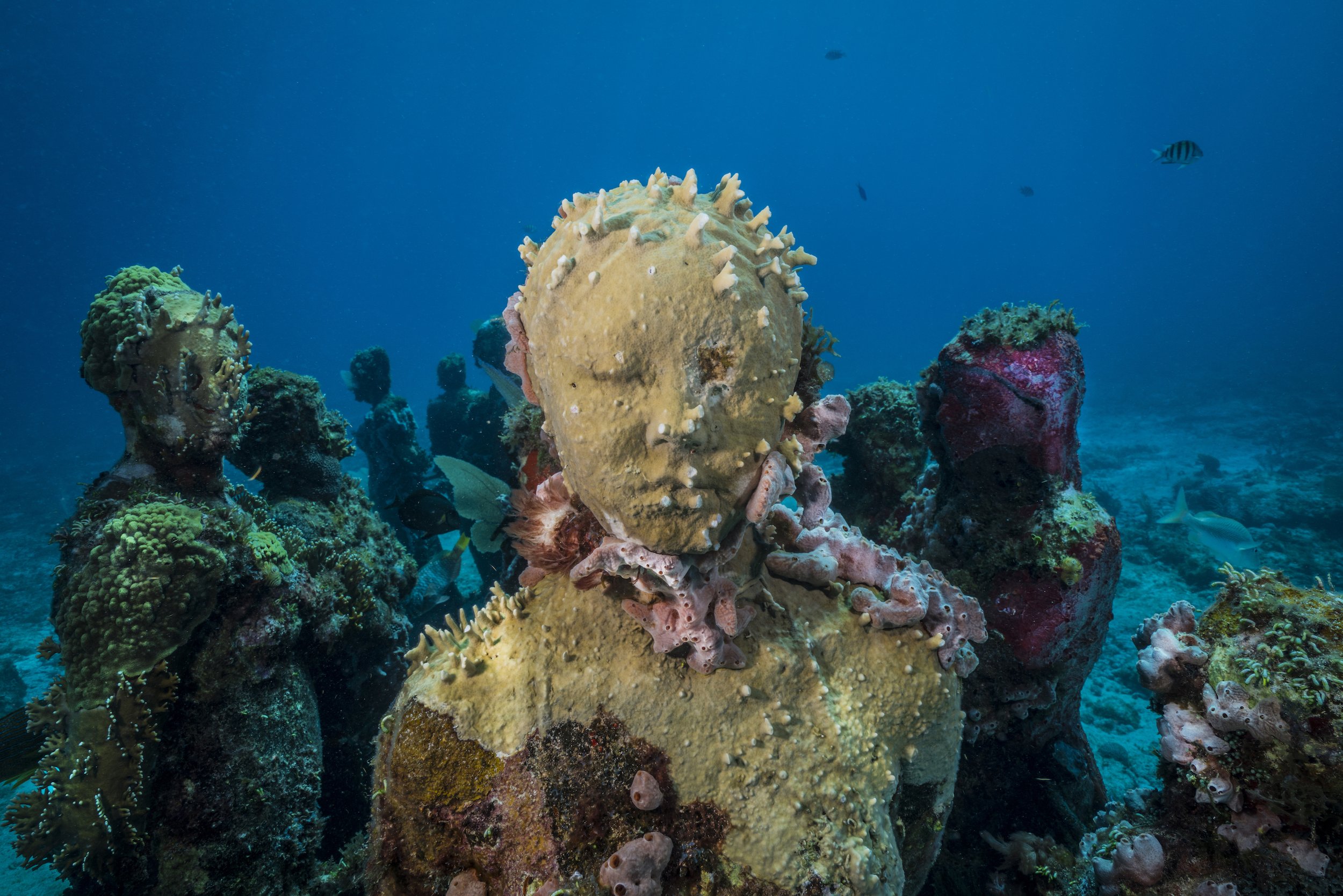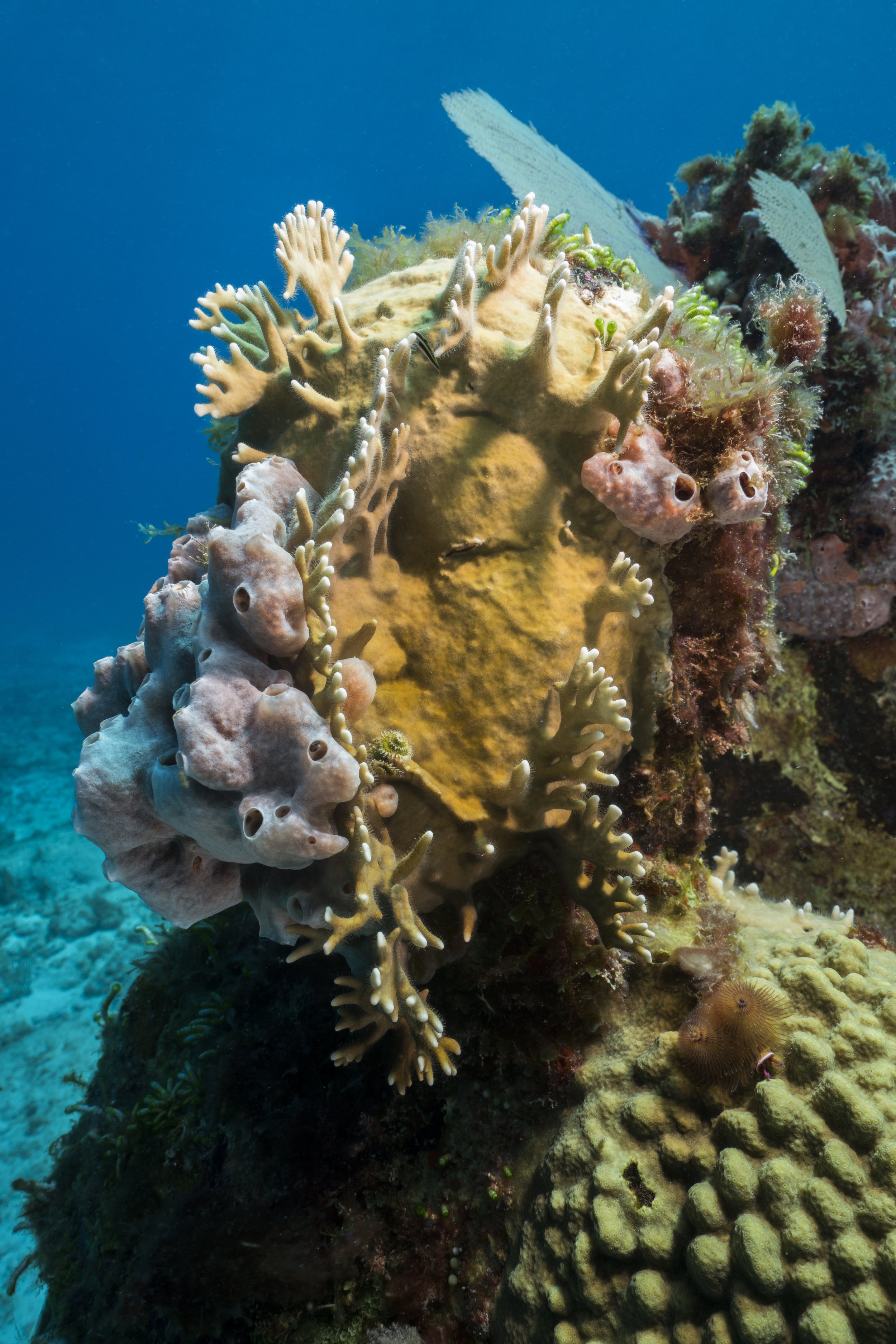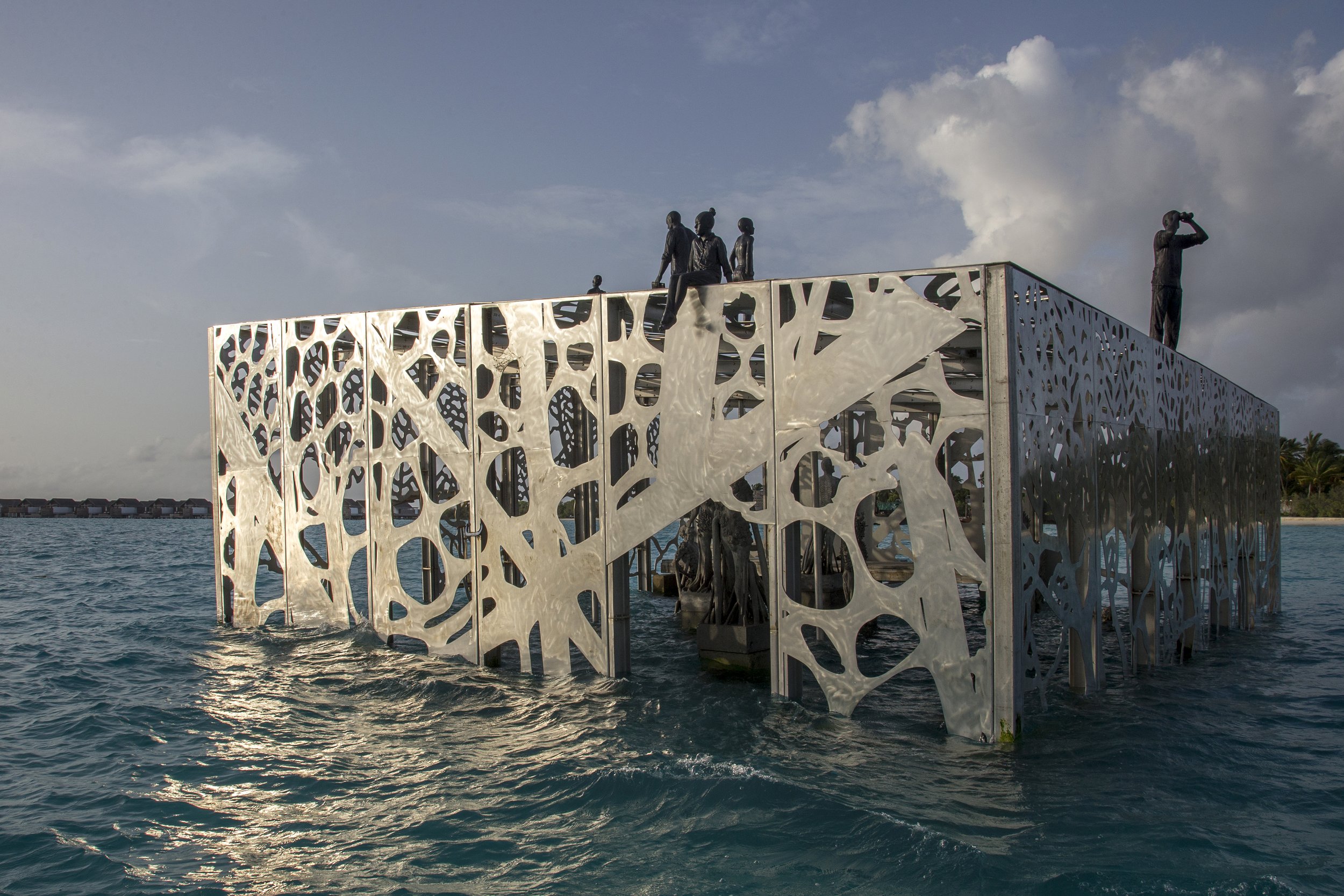water sculptures: jason decaires taylor
“Museums are places of conservation, education, and about protecting something sacred. We need to assign those same values to our oceans.”
Jason deCaires Taylor
Cannes Underwater Mylor
For almost two decades, Jason deCaires Taylor has been part of a unique collaboration with nature, building sculptures that are then submerged under the sea in areas where they will catch the coral polyps after they spawn and become artificial reefs teeming with fish and other marine life.
“As soon as we sink them, the sculptures they belong to the sea.”
- Jason deCaires Taylor
The unique underwater ‘museums’ Jason has created all over the world, are visited by tens of thousands of tourists each year, providing a living, ever-changing theatre where people can fall in love with the underwater world.
His astonishing installations are simultaneously sacred and familiar, reminding us of the unique ability nature has to restore itself and warning us not to be complacent when it comes to protecting our ocean habitat. Like many other great ecologists, Nhat Hanh, Jacques Cousteau or Aldous Huxley for example, Jason understands that we will only fight to save what we know and value.
Coral sequence
Your work is unique in that you collaborate with the ocean, so your pieces grow and change organically over time, as they become reclaimed by the sea and its marine life. What is this process like for you? How do you feel when you revisit them?
This is of course the essence of the work, so it's the part that intrigues and excites me the most. I work with materials, textures and colours in the studio every day, but nothing can replicate the natural forms and intense colours created underwater, so it's always fascinating to see how it has evolved. It's the moment where all the research, planning and sculpting come together, for me it's the big reveal. I always return to see them with a great sense of trepidation, are they going to be completely emblazoned by coral forms, is a rare pineapple fish going to be living under a chin or are they just covered in algae and the coral bleached. Much depends on the sea conditions on the day, in a way part of the creation of these works is documenting them, so I am always obsessed about light, colonisation, water visibility and movement. It's ever changing, so each visit is always unique, a living laboratory if you like.
Part of the power of your work seems to lie in the fact that it is both hopeful and mournful at the same time – giving us stark reminders of the perilous position we find ourselves in and yet offering us the chance of salvation and new life. Do you have an overall sense of positivity for our oceans and humanity?
I wouldn't say I have a consistent approach; my feelings often range from complete futility and anger to a genuine belief in the good in people and the amazing ability nature has to recover. I think these feelings all infuse themselves into the work, but I hope some of the latter prevails in a stronger light. Ultimately, after all is gone, life is found.
It is vital that we hold people accountable for their actions but, at the same time, motivate change by remaining hopeful and positive. I do sometimes worry that our apathy and denial is a genetic flaw/ basic survival mechanism that helps us survive in the short term but is internally engineered to limit our expansion over a longer period, as the rise and fall of numerous civilizations have demonstrated. However, this time the stakes are much higher, and the outcomes could be much worse.
The Silent Evolution, Mexico
The Silent Evolution, Mexico
What is it like to sculpt someone then submerge them? Is the process as intimate as it seems? Are there any individuals that stand out to you from your career, and if so, why?
I have tried a range of different methods to sculpt people, from traditional clay modelling, stone carving and more recently 3D scanning but the method I continually return to is life casting. The process like you mention is very intimate and personal and very dynamic, you arrive at a full positive form within hours. It also captures every line, every pore of the skin in forensic detail and the intensive process requires the model to place great trust in you which is something that draws you together closer. I could write a book on all the characters and experiences we have had life casting. I try to capture people from all walks of life so quite often I approach people on the street, so one minute they can be going to the shop to buy a loaf of bread, the next minute they are in my studio encased in a shell of plaster and vaseline. Certain characters as soon as they drop out of the mould the final sculpture is clear, I instantly know the title of the piece, the message and where I will eventually locate it. It is hard to know the qualities that make that happen. A fisherman in Mexico called Joachin was one of my favourites, his proud stance, chiselled and mysterious face instantly reminded me of the sea.
Do you have a favourite piece, or one that you are most proud of?
Underwater sculptures certainly age better with time. Most of my favourites are quite often some of the earliest works, even though they may be more rudimentary and basic, the marine life has been prolific. I recently visited projects in Grenada and Mexico and in some cases it was hard to establish the sculpture from the natural surroundings. I really love the idea that no matter how much humans try to conquer nature we will all ultimately be absorbed back into the landscape. An important reminder that we are nature (It's no surprise I really love post-apocalyptic films). These earlier works are inundated with fan corals that oscillate in the currents and dense networks of red and pink sponges that channel water through their capillaries. Fire worms and small hermit crabs scuttle across the surfaces. It is nature as theatre, a truly living museum.
What are the most important values you think humanity should celebrate to conserve the oceans and save us from the consequences of climate change?
Firstly we need to change our language in how we describe the sea. I get very frustrated when I hear people talk about fish stocks, quotas, marine resources, zones and territorial waters. It glosses over the fact that we are killing wildlife and decimating natural fragile ecosystems on an industrial scale. Of course everything is interconnected in one-way or another but our seas are especially so, as currents, nutrients and species traverse the planet, borders become particularly arbitrary.
I think if we can change how we relate to nature, how we imagine it then we can better protect it. When people imagine the ocean it can elicit a range of responses, for some its freedom, beauty but for many others its fear and a sense of the great unknown. It’s hard to feel empathy for something so well hidden. In general I don't think people really value the sea. We forget it provides half our oxygen, contains 97% of the world's water, regulates temperature and climate, absorbs 90% of the heat and 30% of the carbon dioxide we create, it's an estimated home to 2 million species, 90% of which have yet to be fully documented.
Your work has not been without controversy, namely the destruction of the Coralarium in the Maldives in 2018 for being ‘anti-Islamic’, and the apparent plagiarism of your work in Damien Hirst’s 2017 show Treasures from the Wreck of the Unbelievable. Have either of these experiences changed you as an artist?
It is difficult to say how, but I am sure an element of cynicism and caution or maybe you should call it experience has now entered my practice. When I first started working underwater I used to think that the sharks in the sea could be a potential danger. Now I realise it's the sharks on land that you have to watch out for. Oceanic sharks can sense blood in the water for miles, land ones can smell money and power on a galactic scale! Authenticity is a rare commodity across the Internet. After the digitalization of many of our interactions from the pandemic I really try to seek out real experiences and connections with people now and try to look through so much of the online veneer.
Coralarium, Maldives
Your work has strong political messages, challenging us to question our collective values and how we got to this stage of climate breakdown. What are your thoughts on the role that art can play in activism?
I think culture plays such an important role in shaping our beliefs and actions and it's been incredibly devalued by our leaders in modern times. Scientists have been making a logical scientific case for climate breakdown for many years and it clearly hasn't motivated people enough. We are emotional spiritual beings that often make some of the most important decisions of our lives based on feelings such as; love, religion and sense of community and belonging. Ancient civilizations knew the importance of iconography and culture to guide our beliefs; marketing and advertising companies know how important it is to connect to emotions in order to sell products. I truly believe artists can bridge the gap between fact and fiction and play a vital role in changing our relationship to the natural world. I think when scientists and artists collaborate it creates a formidable force.
Inertia, Mexico
What next for you?
Ooh, lots of new projects in the pipeline. Getting ready to reveal a new set of sculptures on the Great Barrier Reef in Australia which celebrate the research of a series of marine biologists and indigenous leaders. Several new coral restoration projects in the Caribbean and a series of activist pieces here in the UK which focus on water quality and corporate responsibility (read between the lines on that one).

